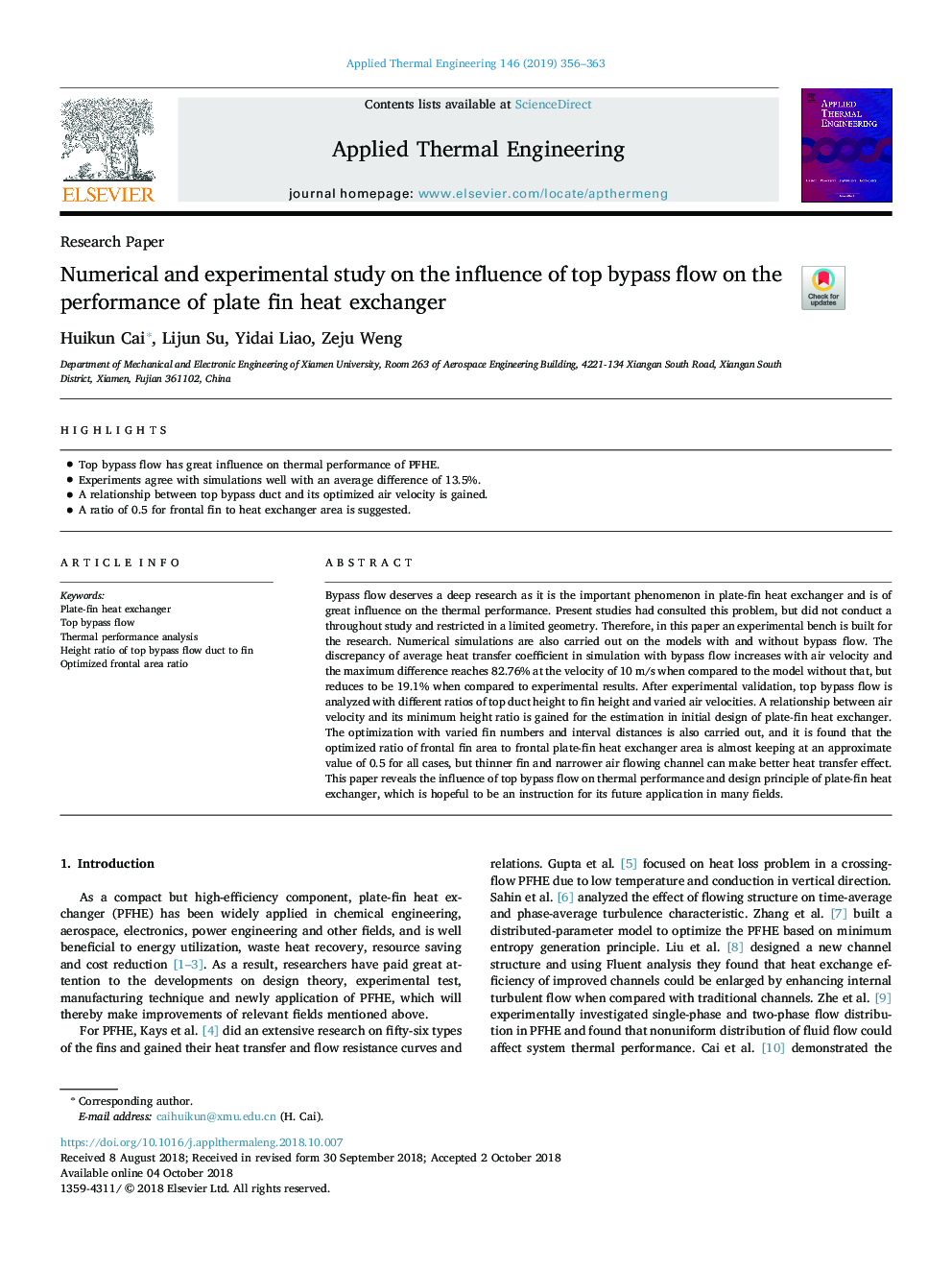| Article ID | Journal | Published Year | Pages | File Type |
|---|---|---|---|---|
| 11020836 | Applied Thermal Engineering | 2019 | 8 Pages |
Abstract
Bypass flow deserves a deep research as it is the important phenomenon in plate-fin heat exchanger and is of great influence on the thermal performance. Present studies had consulted this problem, but did not conduct a throughout study and restricted in a limited geometry. Therefore, in this paper an experimental bench is built for the research. Numerical simulations are also carried out on the models with and without bypass flow. The discrepancy of average heat transfer coefficient in simulation with bypass flow increases with air velocity and the maximum difference reaches 82.76% at the velocity of 10â¯m/s when compared to the model without that, but reduces to be 19.1% when compared to experimental results. After experimental validation, top bypass flow is analyzed with different ratios of top duct height to fin height and varied air velocities. A relationship between air velocity and its minimum height ratio is gained for the estimation in initial design of plate-fin heat exchanger. The optimization with varied fin numbers and interval distances is also carried out, and it is found that the optimized ratio of frontal fin area to frontal plate-fin heat exchanger area is almost keeping at an approximate value of 0.5 for all cases, but thinner fin and narrower air flowing channel can make better heat transfer effect. This paper reveals the influence of top bypass flow on thermal performance and design principle of plate-fin heat exchanger, which is hopeful to be an instruction for its future application in many fields.
Related Topics
Physical Sciences and Engineering
Chemical Engineering
Fluid Flow and Transfer Processes
Authors
Huikun Cai, Lijun Su, Yidai Liao, Zeju Weng,
